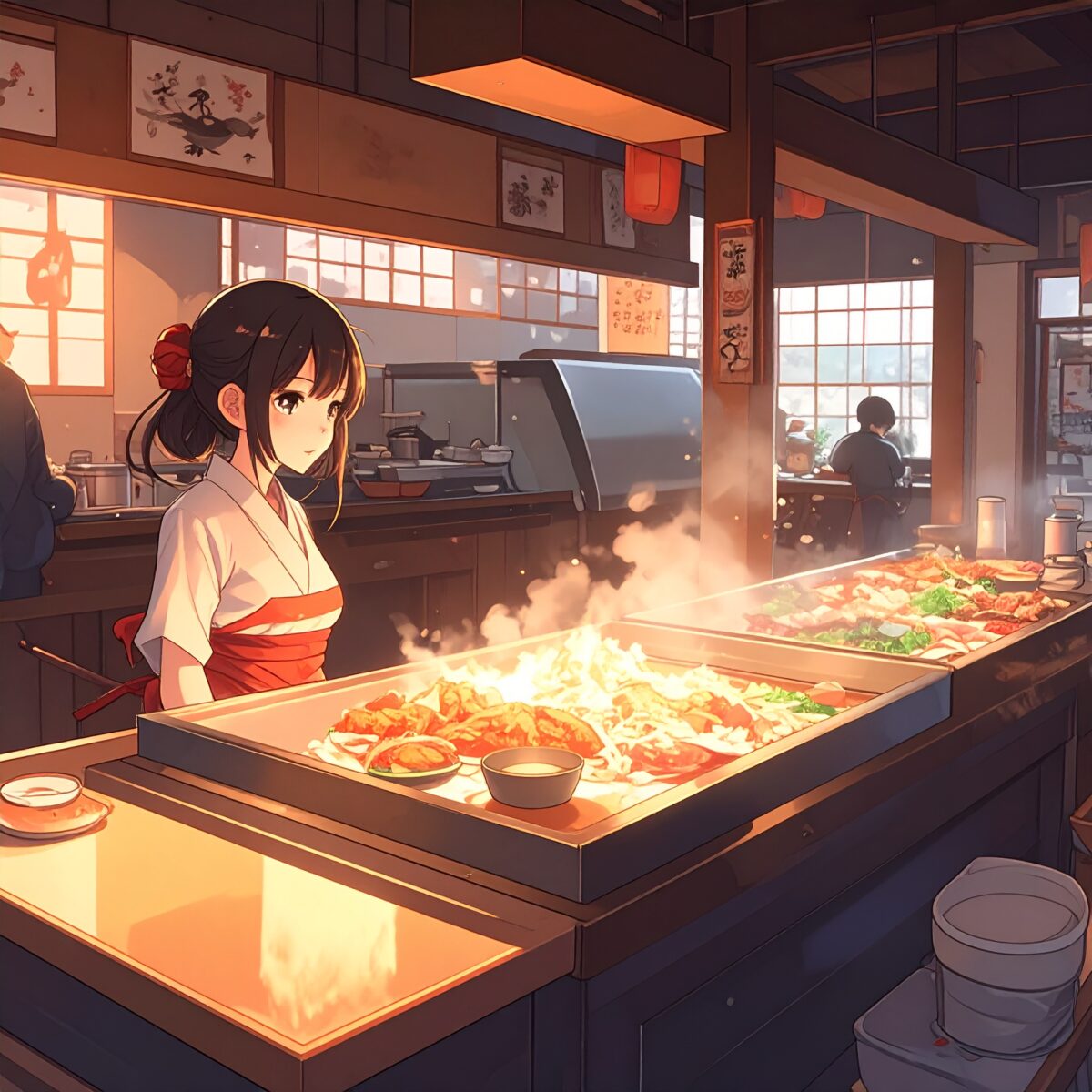When one hears the word “teppanyaki,” it often conjures images of theatrical flames and sizzling sounds in a lively setting. But in Kyoto, teppanyaki takes on a quieter form—one that defies convention and immerses guests in a world of stillness. Here, even the soft crackle of fire, the gentle aroma of searing meat, and the subtle clink of porcelain become part of a silent stage—what might best be described as a “Theater of Tranquility.”
Kyoto is a city that finds beauty not in opulence, but in restraint and calm. This aesthetic sensibility permeates its culinary experiences, and teppanyaki is no exception. Chefs forego grand gestures, instead engaging with ingredients in quiet, measured movements. The way they determine doneness is reminiscent of the tea ceremony—every gesture intentional, every motion refined. As guests observe, their posture straightens, and their senses grow sharp and attentive.
The sound of meat sizzling becomes the background music of the moment. The clink of tongs, the gentle hiss as sauce hits the teppan—each sound becomes a kind of dialogue, weaving rhythm with the chef’s breath. Words are few, and conversation softens naturally. In this space, dining becomes the conversation, and hospitality is conveyed without speaking.
On the teppan, only the finest Wagyu beef and seasonal Kyoto vegetables are prepared. There is no excess seasoning—only the purest expression of the ingredients, elevated by the careful use of salt and oil. The precision of heat is masterful: the outside lightly crisped, the inside meltingly tender. Watching the moment of completion unfold before one’s eyes, there’s a sense of witnessing the very essence of life drawn forth from the ingredients.

Even the tableware and plating reflect the spirit of Kyoto. Each dish is presented with grace on handcrafted ceramics rooted in traditional craftsmanship, embracing the Japanese aesthetic of refined simplicity and intentional space. There is no ostentation—only a poised, dignified beauty. It is a feast for the eyes, a balm through sound, and a gentle unravelling of the heart through fragrance. In Kyoto, teppanyaki becomes not just cuisine, but a quiet form of stage art.
Many travelers who encounter this “silent teppanyaki theater” come to see dining in a new light. In a space free from noise, time slows as guests observe the chef’s quiet choreography and the unfolding story on the teppan. The sensory presence—the sizzle, the stillness, the warmth in the air—cannot be captured in photographs, yet it lingers in memory long after the meal ends.
To choose teppanyaki in Kyoto is to embrace a different kind of journey—one not marked by sightseeing spots, but by still moments that move the soul. It is a mirror reflecting the true essence of Kyoto: where hospitality is found not in spectacle, but in serenity. And upon the steel plate, that hospitality takes form in its purest expression.




